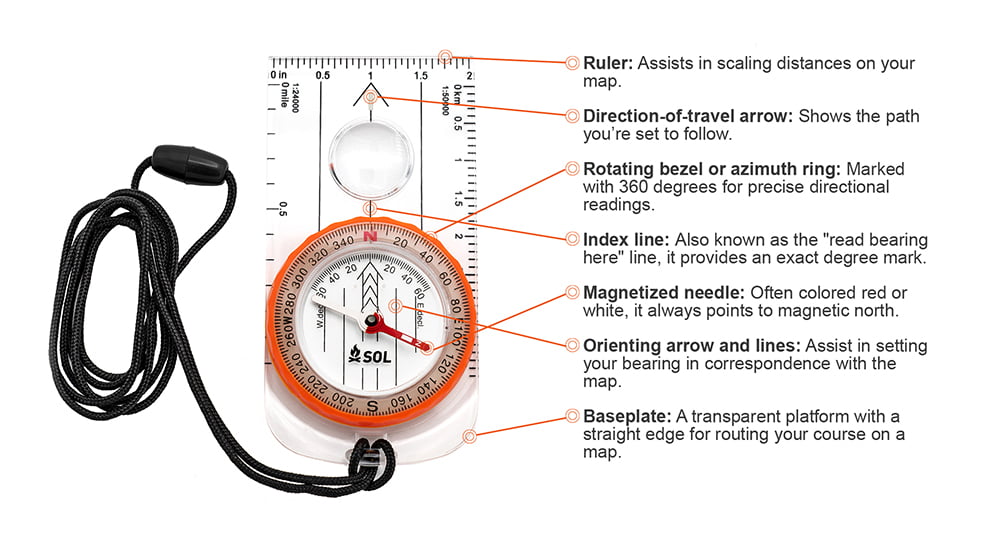Navigating Your Compass: Understanding the Basics
Navigating with a compass comes down to knowing its parts and their purposes. Here’s a quick rundown of what you’ll find on a well-equipped compass:

The Dance of Declination: Tuning Your Compass
Declination is the variance between magnetic north and true north. It’s a critical calculation, as even a single-degree mistake over a mile can lead your journey 100 feet off course. Before setting out:
- Remember that this is a set-once action unless you move to a significantly different geographic region.
- Find the current declination for your location from updated topographic maps or the NOAA.
- Adjust the compass for declination using the manufacturer’s instructions.
Aligning Reality with Your Map: The Art of Map Orientation
Map orientation seamlessly ties your paper map to the physical landscape:
- Place your compass flat on the map, aligning the direction-of-travel arrow with the map’s top edge.
- Rotate the bezel to match the north on the map with the direction-of-travel arrow.
- Pivot your body with the map and compass in hand, aligning the magnetized needle with the orienting arrow.
- Now, correlating real-world landmarks with your map becomes intuitive.
Taking Bearings: The Compass’s True Call
A bearing is a precise directional heading. To follow or identify a bearing:
From a Map:
- Lay your compass on the map, baseplate edge between your position and your destination.
- Turn the bezel, aligning the orienting lines with the map’s north-south gridlines.
- Your bearing is where the index line intersects with the bezel.
In the Field:
- Point the compass toward a landmark and turn the bezel until the needle is within the orienting arrow.
- Read the bearing from the index line.
- Place the compass on the map, and draw a line from the landmark along the edge of your compass.
- Your current location is where this line crosses your path on the map.
To further pinpoint your location via triangulation, repeat the bearing process using two additional landmarks forming at least 60 degrees between them.
Your Guide to Compass Mastery
Understand your compass, adjust for declination, orient your map, and take bearings – these skills form the core of outdoor navigation. Always match what you see on paper to what you see around you, and regularly consult your compass to ensure you’re on track. Even though technology can falter, a compass guided by the Earth’s magnetic field rarely steers you wrong.
Next time you lace up your boots and embark on an adventure, confidently explore knowing that you carry the wisdom of navigation in your hands.
For detailed compass selections and other related topics, consider exploring further resources and tools to enhance your navigational expertise.
